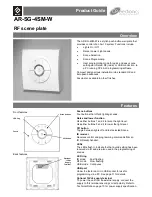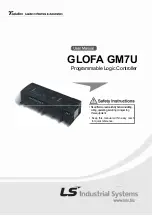
www.ti.com
EMAC Functional Architecture
Configuration register (EMACCFG), found at device level.
20. Enable the device interrupt in EW_INTCTL.
2.17 Interrupt Support
2.17.1
EMAC Module Interrupt Events and Requests
The EMAC/MDIO generates 18 interrupt events, as follows:
•
TXPENDn: Transmit packet completion interrupt for transmit channels 7 through 0
•
RXPENDn: Receive packet completion interrupt for receive channels 7 through 0
•
STATPEND: Statistics interrupt
•
HOSTPEND: Host error interrupt
2.17.1.1
Transmit Packet Completion Interrupts
The transmit DMA engine has eight channels, and each channel has a corresponding interrupt
(TXPENDn). The transmit interrupts are level interrupts that remain asserted until cleared by the CPU.
Each of the eight transmit channel interrupts may be individually enabled by setting the appropriate bit in
the TXINTMASKSET register. Each of the eight transmit channel interrupts may be individually disabled
by clearing the appropriate bit in the TXINTMASKCLEAR register. The raw and masked transmit interrupt
status may be read by reading the TXINTSTATRAW and TXINTSTATMASKED registers, respectively.
When the EMAC completes the transmission of a packet, the EMAC issues an interrupt to the CPU by
writing the packet's last buffer descriptor address to the appropriate channel queue's TX completion
pointer located in the state RAM block. The write generates the interrupt when enabled by the interrupt
mask, regardless of the value written.
Upon interrupt reception, the CPU processes one or more packets from the buffer chain and then
acknowledges an interrupt by writing the address of the last buffer descriptor processed to the queue's
associated TX completion pointer in the transmit DMA state RAM.
The data written by the host (buffer descriptor address of the last processed buffer) is compared to the
data in the register written by the EMAC port (address of last buffer descriptor used by the EMAC). If the
two values are not equal, indicating that the EMAC has transmitted more packets than the CPU has
processed interrupts for, then the transmit packet completion interrupt signal remains asserted. If the two
values are equal, indicating that the host has processed all packets that the EMAC has transferred, then
the pending interrupt is cleared. Reading the TXnCP register displays the value that the EMAC is
expecting.
The EMAC write to the completion pointer stores the value in the state RAM. The CPU written value does
not change the register value. The host-written value is compared to the register content, which was
written by the EMAC. If the two values are equal, then the interrupt is removed; otherwise the interrupt
remains asserted. The host may process multiple packets prior to acknowledging an interrupt, or the host
may acknowledge interrupts for every packet.
2.17.1.2
Receive Packet Completion Interrupts
The receive DMA engine has eight channels, and each channel has a corresponding interrupt
(RXPENDn). The receive interrupts are level interrupts that remain asserted until cleared by the CPU.
Each of the eight receive channel interrupts may be individually enabled by setting the appropriate bit in
the RXINTMASKSET register. Each of the eight receive channel interrupts may be individually disabled by
clearing the appropriate bit in the RXINTMASKCLEAR register. The raw and masked receive interrupt
status may be read by reading the RXINTSTATRAW and RXINTSTATMASKED registers, respectively.
When the EMAC completes a packet reception, the EMAC issues an interrupt to the CPU by writing the
packet's last buffer descriptor address to the appropriate channel queue's RX completion pointer located
in the state RAM block. The write generates the interrupt when enabled by the interrupt mask, regardless
of the value written.
67
SPRUEF8F – March 2006 – Revised November 2010
C6472/TCI6486 EMAC/MDIO
Submit Documentation Feedback
Copyright © 2006–2010, Texas Instruments Incorporated
















































